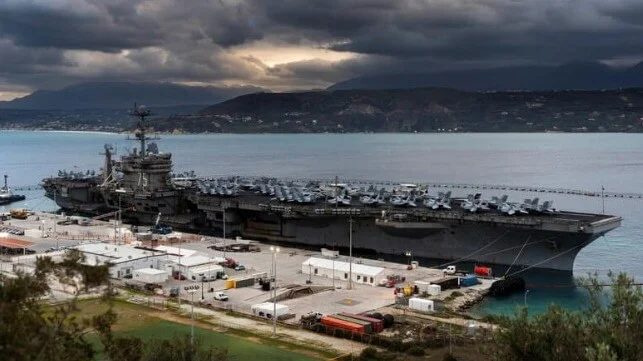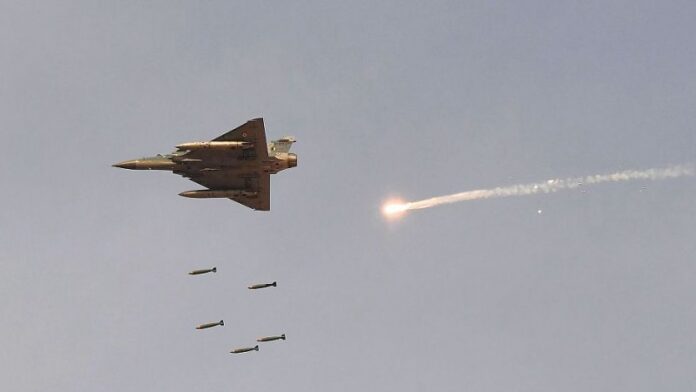Proxy Wars Reveal China’s Military Strategy
China avoided direct military conflict but effectively tested its technologies through proxy conflicts in the Red Sea and Kashmir. In both areas, Beijing monitored its satellite, drone, and airpower systems against American and Indian forces without sending soldiers. Houthis launched attacks using satellite imagery from Chang Guang Satellite Tech, targeting U.S. ships and disrupting Western military operations. Ashok Kumar, Director General of India’s Centre for Joint Warfare Studies, explained, “Anything which is with China today can be deemed to be with Pakistan tomorrow.” Therefore, China collected combat intelligence without exposure or international backlash.
Assassin’s Mace in Motion
China employed its “Assassin’s Mace” doctrine to counter superior equipment with cost-efficient tools, sidestepping head-on conflict. Houthis, aided by Chinese satellites, launched drone waves against American assets in the Red Sea, targeting the USS Truman. U.S. ships built for Cold War scenarios struggled under swarm-style attacks guided by third-party systems. This approach disables high-cost gear using affordable precision, avoiding traditional battle engagements. Thus, China advanced its military agenda while others bore the cost.
American Dominance Challenged in the Red Sea
The USS Truman’s mission exposed U.S. weaknesses in handling modern asymmetric threats. The vessel lost three jets and suffered a collision during evasive maneuvers from Houthi drone strikes. Joseph Trevithick of The War Zone confirmed the carrier was “making a hard turn in response to incoming Houthi fire.” Chinese vessels navigated the same area without harm, aided by strategic coordination and lack of Houthi hostility. Consequently, U.S. carriers no longer signal uncontested power projection.

India’s Aerial Superiority Broken in One Night
Pakistan claimed it downed six Indian fighter jets during a brief conflict in May 2025, including three high-cost Rafale aircraft. Backed by China’s radar and satellite assistance, Pakistan’s response overwhelmed India’s defenses. Ashok Kumar acknowledged, “It helped them to redeploy their air defense radar so that any actions which we do from the aerial route is known to them.” These remarks reveal how Chinese surveillance reshaped the battlefield in real time. India’s silence afterward only reinforced the perception of defeat.
Beijing Tests Its Arsenal Without Bearing the Cost
China evaluated its military tools by allowing allied forces to deploy them in active conflicts. Pakistani troops used Chinese-made PL-15 missiles and J-10C jets to engage Indian targets. Houthis, guided by satellite data, launched successful drone missions against American ships. Zhou Bo, retired colonel of the Chinese military, told The New York Times, “The real effect is… to see how China’s defense industry has developed by leaps and bounds.” Therefore, China upgraded its arsenal while avoiding diplomatic fallout or loss of life.
The U.S.-India Axis Falters Under Pressure
India and the United States aimed to present a united front against China, yet both suffered setbacks during recent proxy engagements. India’s air force failed to defend its airspace, while the U.S. Navy retreated under pressure from drones. Prime Minister Shehbaz Sharif said Pakistan had downed six Indian jets, a claim left unchallenged by New Delhi. President Trump announced a “full and immediate ceasefire,” but India denied external involvement, revealing diplomatic inconsistencies. These failures undermined both nations’ credibility and strategic standing.
Economic Warfare Embedded in Proxy Strategy
Western shipping routes collapsed under drone threats, while Chinese vessels moved freely through contested Red Sea lanes. Tuvia Gering from the Institute for National Security Studies noted, “This was one less aircraft carrier in the South China Sea,” referring to diverted American resources. Houthis targeted Western commerce using Chinese equipment while sparing Beijing-linked ships. Xinhua mocked U.S. impotence against “non-traditional opponents like the Houthis,” reinforcing China’s image of strength. As a result, China gained economic ground while Western economies faced disruption.
Strategic Ambiguity Maintains Diplomatic Cover
While appearing neutral, China supplied drone components and intelligence through Chang Guang, leading to American sanctions. Tammy Bruce, U.S. State Department spokeswoman, stated that the company “is directly supporting Iran-backed Houthi terrorist attacks on U.S. interests.” Conflict Armament Research found Chinese-made hydrogen fuel cells powering Houthis’ stealth drones. These parts flowed through covert supply networks run by language-trained operatives. Moreover, China avoided direct blame by using private firms and proxies.
Beijing’s Calculated Advantage Expands
Chinese proxies drained U.S. naval assets and exposed Indian vulnerabilities without Beijing entering the battlefield. Taiwan’s former general Li Cheng-chieh warned that Taiwanese jets “would have little chance of survival” against Chinese fighters. Beijing gathered feedback from missile launches, radar shifts, and drone patterns to refine its doctrines. In addition, Chinese officials continued diplomatic outreach to maintain their international posture. This two-pronged approach delivered both military learning and soft power influence.
Proxy Warfare Tilted Global Balance
China’s use of stealth tactics, asymmetric tools, and satellite guidance marked a turning point in modern conflict. American forces, structured around conventional supremacy, faltered against unconventional threats in the Red Sea. Indian reliance on Western fighter platforms failed when countered by Chinese-backed systems. Zhou Bo summed up China’s advantage: “This is for [others] to think about,” highlighting lessons others must now absorb. In 2025, China achieved dominance not through war but by rewriting its rules.

